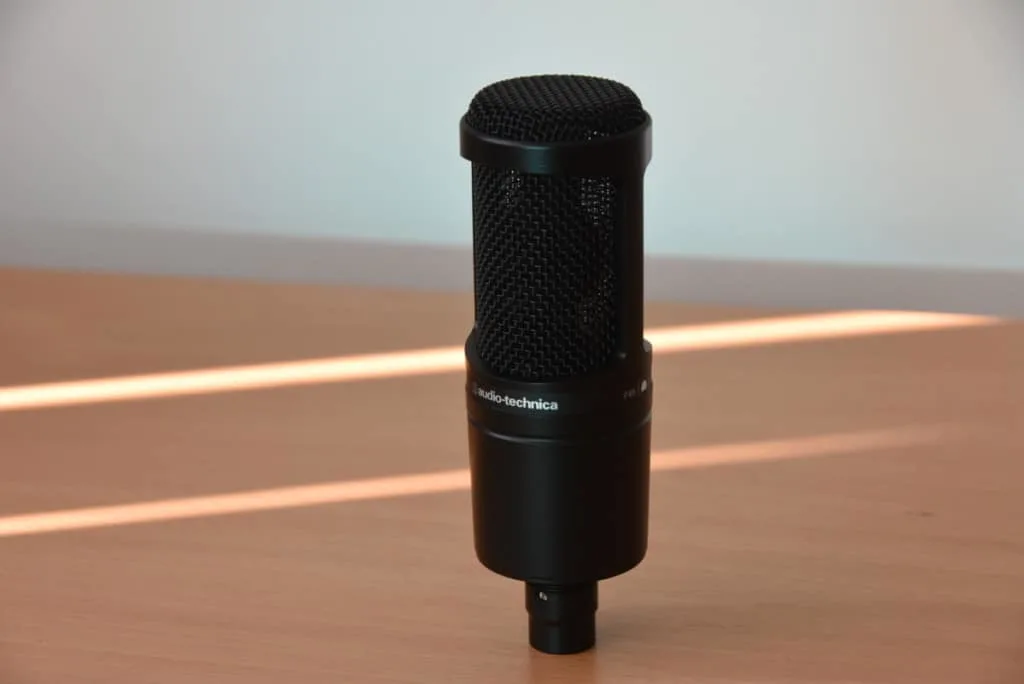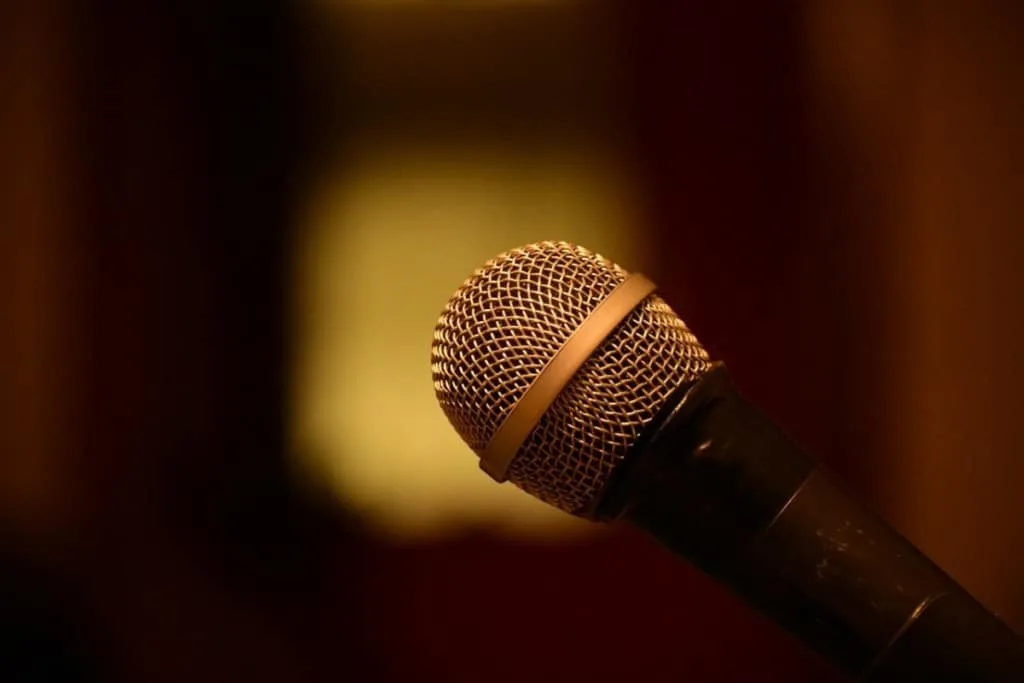If you are a singer you know that your most important instrument is your voice.
In fact, we can say that the most important instrument for many bands is the singer’s voice. So, that very moment in which you want to give it all at a gig and your microphone is too quiet is the worst-case-scenario for most of us. I’ve been doing this long enough to bring you the best troubleshooting tips to be up and running in no time.
The first thing to do if your microphone is too quiet is to check on the source volume. Then, apply this method to progressively check what can go wrong.
Start with the cable > everything in between > the microphone > finally the source.
Troubleshoot each step of the path separately: change the cable, pedal cables, bypass al pedals, change the microphone, and finally change the console channel you’re using if possible.
What you’ll see next is an in-depth troubleshooting guide with all the info collected through 20+ years of singing in stages and studios. Don’t let technical issues take away from your inspiration and performance. A golden rule of the road is: be ready, always ready.

Recording Scenario
Let’s tackle this important scenario first before going to the live stages and the screaming crowds.
XLR gives you more gain than TRS.
This is one of the first things I learned the hard way: XLR cables are richer than TRS cables. Why is this important? Because most of the lower-end, cheap dynamic microphones will come with a TRS to XLR microphone cable inside the box for the simple reason that they are cheaper and can be plugged in almost anywhere.
You bought this cool audio interface, it is configured and ready, and you plug in and realize that your microphone is too quiet. Your heart is broken in a nanosecond. Using dynamic microphones into an audio interface requires a preamp. If you don’t have a preamp, an XLR to XLR connection can work slightly better until you get one.
Take a look at this video from the stampsound Youtube channel.
You can subscribe to the channel here, it’s completely free.
Are You Using A Preamp?
This comes from the previous item. If you have some money to invest and you are a singer, buy yourself a preamp.
This works great not only to increase the volume in a microphone that is too quiet but also to color the sound to your liking.
Here’s the deal: most of the albums you listen to are made using state of the art preamps which color the sound and give it a particular gain structure. Buying a preamp could be the first step to find “your” vocal sound besides fixing volume issues.
Here’s an example of a basic microphone preamp.
A more popular preamp that has gained a lot of admirers is the Cloudlifter CL-1 Check it out here on Amazon
Check out my article on recording vocals without a preamp right here.

Condensers vs Dynamics Microphones vs Microphone Volume
Condenser microphones are more prone to be found in a recording studio.
They solve the issue of the gain and volume through phantom power. Phantom power is (extra electricity) (48v) that these condenser microphones need allows them to excite the signal coming from your voice.
As a result, the audio you get from a condenser microphone is richer, rounder, and has more warmth. Dynamic microphones, on the other hand, are better for handling live situations and since they don’t use phantom power, they tend to be quieter, thinner, less rich in the response. A condenser microphone with phantom power will never be too quiet. If you have a choice always choose condenser microphones in the studio.
A great choice for a good condenser microphone is the Audio Technica AT2020. Check it out here.

You will also benefit from an audio interface. A great audio interface to start with is the Scarlett 2i2 which has phantom power built-in.
Check out the Scarlett range of audio interfaces here
As for dynamic microphones, that’s an easy choice The Shure SM-58 can be found in virtually every studio all around the world.
Take a look at the Shure SM-58 Microphone here on Amazon.
Compressors Save The Day!
A compressor is a very important effect in the life of any musician, but especially for singers.
A compressor will take the original signal, compress it taking out the peaks, and filling the valleys and make it louder, richer.
The one drawback of compression if you use it too much is that it tends to kill dynamics. By saying this I mean that cutting off peaks and fattening the valleys, it makes your voice fluctuations sound more alike in volume. This is mainly why when you put on a record the voice is always steady at the front and doesn’t fluctuate in volume at all. Compressors can help you save the day if your microphone is too quiet.

You Might Need A Mixer
This is a logical conclusion, after all, we’ve talked about above: it might be time for you to invest in a mixer.
It is not about the multichannel capability of the mixer, but about the sound coloration. If you have a mixer in the studio, you can solve phantom power, equalization, preamp, in some cases, and signal volume with it.
Nowadays the smallest mixers by brands like Mackie are very inexpensive and will drastically change the volume of your microphone. Invest in one; you will not regret it at all.
Live Scenario
The rules that apply in a studio don’t apply to live stages. You can have 1,000 studio hours in you but hitting the stage and doing things real-time with people’s faces waiting for you is a whole different concept. Let’s look at five troubleshooting steps to follow when your microphone is too quiet in a live scenario.
Where Is The Audio Coming From?
This is the first thing you have to think about because in most stages you have two different sound sources: one goes inside and the other goes outside.
The inside audio is what we call monitoring and it is there for the sole reason of helping musicians hear themselves.
Usually, there is a different desk, a different engineer, and different speakers. The first thing to check is if you are not hearing yourself but people at the show are (the outside PA is working) or if your voice is too quiet overall.
If it is the monitoring, then you know it is not your cable or microphone. Sometimes, you get that awful “shoulders shrugging” from the engineer, and basically you know you’re on your own with no monitoring (more on that later). You could also invest in some in-ear monitoring to help.
Cables Have An Expiration Date
Pros always take more than one cable with them.
Always, always, always have a spare of the cheapest, most fragile parts of your set up. Cables do have an expiration date but before finally dying on you, they will lose volume and power or will do scratchy noises.
In order to avoid that, the first thing you need to check when your microphone is too quiet is the cable. Replace it for a different one on the spot and that might even improve the sound quality. Take several spares and when a microphone cable is dying on you, just replace it, don’t keep it.
Mic Closeness Is A Skill You Learn With Time
Let me tell you a story. I used to sing and play the lead guitar in a rockabilly band. Yes, I was a Brian Setzer wannabee. I wore a suit and had my side brows long enough to be proud of them.
I was singing into a Shure Super 55 which is an amazing microphone that sounds superb but is super lineal.
You have to literally sing to the right spot because otherwise your voice is too quiet, fading out. It took me several shows of driving everyone insane until I went to google and found info on how to sing on that specific microphone. The closeness to the microphone as you sing is a skill you get with time and shouldn’t take for granted.
There are many YouTube tutorials on how to do it, so if your voice sounds too quiet, just stick your lips to the microphone and give it a go; you might have a directional dynamic microphone in front of you.
Live Effects Units And Microphone Volume
Live effects units for singers are making their way into live stages more and more every day.
I remember watching Jane’s Addiction and seeing legend Perry Farrell (the creator and owner of Lollapalooza?) tweaking his own effects from this awkward and huge rack unit.
Well, most singers nowadays use stomp boxes or multi-effects units just like the ones at the feet of guitar players.
If you have one of these, there is one more thing to check: the cables going from the microphone to it and from it to the mixing board. Also, make sure you are in the right bank and that the overall volume is all the way to the top.
The Helicon Harmony is a great vocal effects pedal. Be sure to take a look at one here
Finally, power can be an issue so make sure you also have spare batteries and another AC adapter just in case.
The Sound Engineer, Friends Better Than Enemies
This is the final troubleshooting that you might think of like a pro tip: always make friends with the sound engineer.
Bigger acts always take their own people everywhere they go. You might not have that budget right now and hence, need to trust the person hired by the festival, the bar, or the other band.
Make sure you start off with the right foot and they can be very helpful for you. Treat them with extra kindness, buy them a beer, and they will pay attention to your performance and help you in every way they can. If your microphone sounds too quiet, direct a look at your new friend, explain it with symbols and he or she will be ready to help you out.
The Extra One: Repair Tech, Take My Microphone
Finally, the eleventh troubleshooting step is to have your favorite microphone checked at least annually.
You know like guitar players and bass players take their instruments to luthiers for intonation and a thorough clean up, you should do the same with your mic. For example, Shure sells some spare parts like the upper grill of a Shure SM58 which gets all the grime from the live shows and can prevent your voice sound from reaching the capsule, decreasing your sound quality.
Find yourself a trusty tech and have your microphones serviced at least once a year if you use them in live situations a lot.
Conclusion
Your microphone being too quiet can obey to a plethora of reasons and among them you can find all of the above. Follow our troubleshooting checklist both live and in the studio, take your spares to every show and remember the golden rule of the road: be ready, always ready.
Happy singing!
